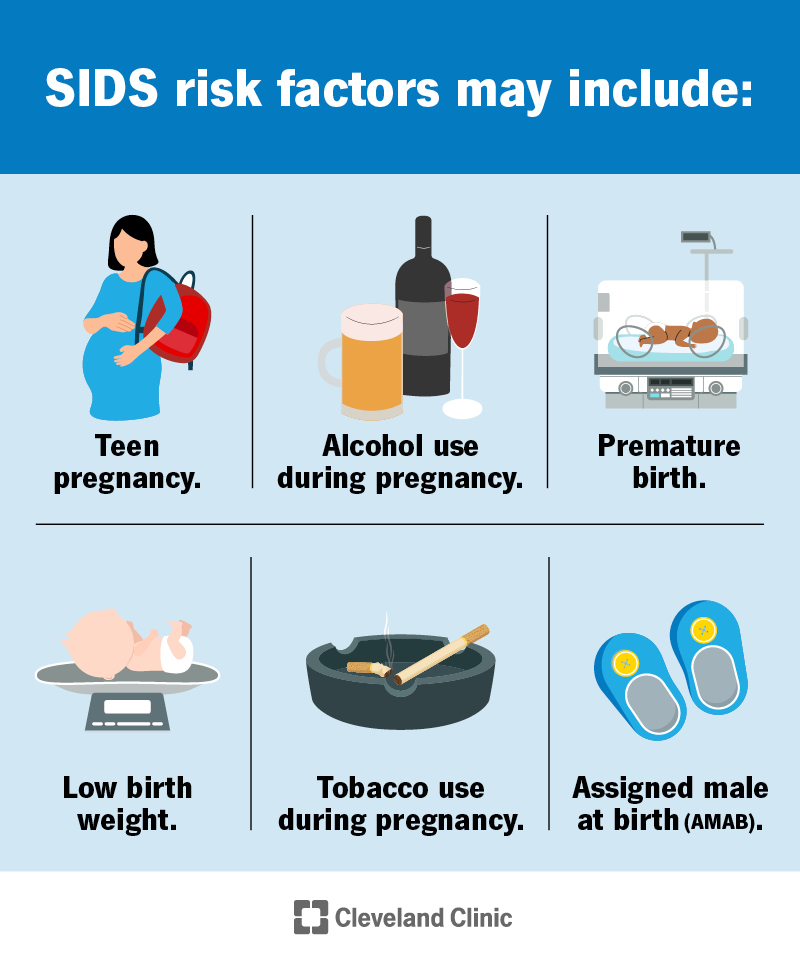Sudden Infant Death Syndrome

- 16 Oct 2025
In News:
- Sudden Infant Death Syndrome (SIDS) refers to the sudden, unexplained death of an infant below one year of age, even after thorough medical investigation, including autopsy, review of medical history, and examination of the death environment.
- It is a major contributor to infant mortality globally, and October is observed as SIDS Awareness Month to promote public understanding and preventive practices.
Epidemiology and Vulnerable Age Group
- Most SIDS cases occur between 2 to 4 months of age, and around 90% of incidents occur before six months. While it can happen at any time, cases most commonly occur during sleep, typically between midnight and early morning hours. Slightly more male infants are affected compared to females.
- SIDS is the leading cause of death in infants aged 1 month to 1 year in countries like the United States, with approximately 2,500 infant deaths annually.
Understanding SIDS and SUID
SIDS forms part of a broader category termed Sudden Unexpected Infant Death (SUID), which encompasses all sudden infant deaths, including those with clear causes (such as suffocation) and those without identified causes. About half of SUID cases are attributed specifically to SIDS.
Risk Factors and Possible Mechanisms
Although SIDS remains medically unexplained, research suggests a combination of biological vulnerability and environmental triggers during a critical developmental period. Proposed mechanisms include immaturity of the brain regions regulating breathing, heart rate, temperature, and arousal from sleep, as well as possible genetic predisposition.
Recognised risk factors include:
- Premature birth and low birth weight
- Exposure to tobacco smoke or alcohol during pregnancy
- Unsafe sleep environment or sleeping position
- Lack of prenatal care
- Overheating during sleep
- Teenage pregnancy
- Male sex
- Sibling history of SIDS
- Being a twin
- History of apnea episodes
Importantly, vaccines do not cause SIDS; recent studies indicate that timely vaccination may actually reduce SIDS risk by up to 50%.
Prevention and Safe-Sleep Guidelines
While SIDS cannot always be prevented, certain practices can significantly reduce risk. Key recommendations include:
- Always place infants on their backs for sleep.
- Use a firm, flat sleep surface with only a fitted sheet.
- Avoid loose bedding, pillows, toys, and crib bumpers in the sleep area.
- Have the baby sleep in the same room but not the same bed for at least the first six months.
- Avoid smoking, alcohol, and drug exposure during and after pregnancy.
- Maintain a cool sleeping environment and avoid overheating.
- Breastfeeding and the use of pacifiers are associated with reduced risk.
- Stop swaddling once the infant can roll over.
- Provide supervised tummy time while the infant is awake to promote development and prevent flat-head syndrome.
Consumer devices marketed to prevent SIDS, such as breathing monitors, have no proven benefit in preventing deaths.
